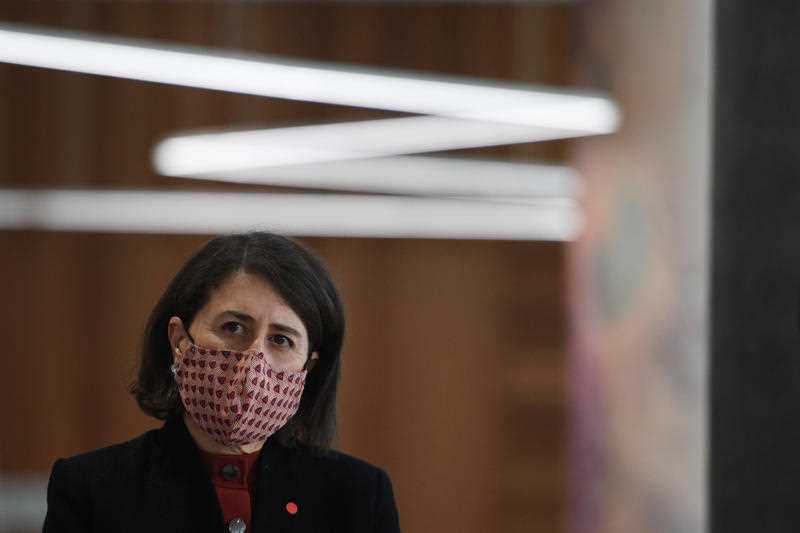NSW won’t take interstate border closures into account when deciding whether to ease Greater Sydney’s COVID-19 lockdown settings at the end of August, NSW premier Gladys Berejiklian says.
Instead, the government will focus on the “health and safety and wellbeing” of NSW residents – acknowledging states with a preference for “COVID zero” will keep their borders shut regardless.
The remarks by the premier suggest 5.4 million Sydneysiders won’t be able to travel interstate for months as other jurisdictions enact border closures for hotspots.
NSW recorded 283 local COVID-19 cases in the 24 hours to 8pm on Sunday 8 August, 106 of which were in the community while infectious.
An unvaccinated northern Sydney woman in her 90s has also died, taking the death toll from the current outbreak to at least 29.
The New England regional city of Tamworth will on Monday join the Hunter region and Armidale in a snap seven-day lockdown after an infected person visited the area.
Greater Sydney and surrounding regions are in lockdown until at least 28 August as authorities battle to contain a Delta strain outbreak.
Ms Berejiklian has set a goal of six million COVID-19 vaccinations by the end of August in order to consider easing lockdown settings. About 4.5 million jabs have been administered so far.
Despite saying last week that “COVID zero” remains the goal in NSW, the premier on Monday admitted lockdown restrictions may partially ease from 29 August even if local transmission is occurring.
Instead, conditions would depend on the prevalence of COVID-19 in the community, as well as hitting the six million jab target.
But pre-pandemic freedoms could not be countenanced until vaccination rates of 70 and 80 per cent are reached.
Ms Berejiklian acknowledged this meant residents of Sydney and surrounds could be banned from interstate travel for the long term, given the tendency of other states to close borders.
But she argued locked-down residents would prefer more freedom in their day-to-day lives – protected by vaccination – sooner.
This could include a return to the classroom for school students or more on-site work.
“I’m sure if you asked the majority of people in this state whether (they) look forward to more freedoms than we have now, I think the answer would be yes,” Ms Berejiklian told reporters.
“At the moment now nobody from NSW can travel anywhere anyway. So isn’t it better for our citizens, for our health and safety and wellbeing, for (them) to have those freedoms?
“I remember other states closing borders to NSW when we had very low numbers of cases that weren’t even Delta … I think it’s pretty predictable what the other states will do.”
Residents of Greater Sydney and surrounds are not permitted to visit regional NSW unless for essential activity, and cannot freely enter any other Australian state or territory.
The director of the Royal Prince Alfred hospital’s intensive care unit, Richard Totaro, said vaccination made COVID-19 a “much more mild disease” that would keep people out of hospital.
COVID-19 patients who end up intensive care stay in the unit for up to five weeks, clogging up the system, he said.
There are 349 coronavirus patients in hospital, 67 of them in intensive care and 29 are ventilated.
“The remarkable thing about this disease in people who are not vaccinated is just how progressive and relentless the deterioration can be and how incredibly sick patients become,” Dr Totaro said.
Meanwhile, thousands of Year 12 students from eight council areas in western and southwestern Sydney will this week get their Pfizer jab.
NSW Health also vaccinated almost 2000 supermarket and food distribution workers with AstraZeneca on a day it dubbed “Super Sunday” at the vaccination hub at Olympic Park.
Elsewhere, authorities have warned Byron Bay residents to be on alert after a COVID-positive Sydney person visited the area last month.
AAP



